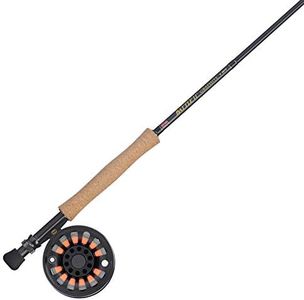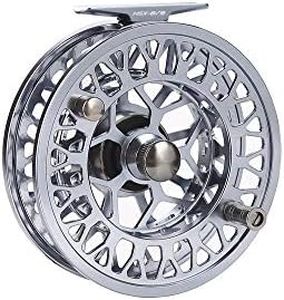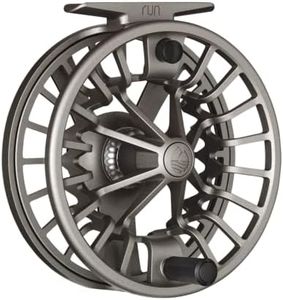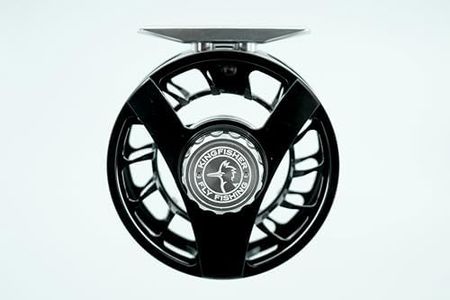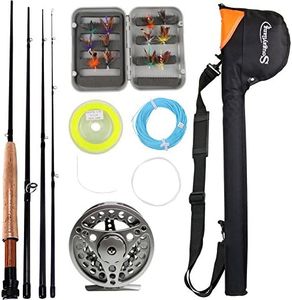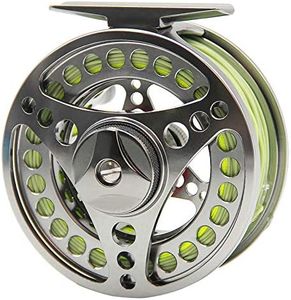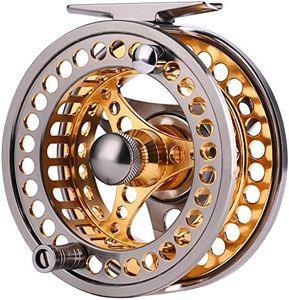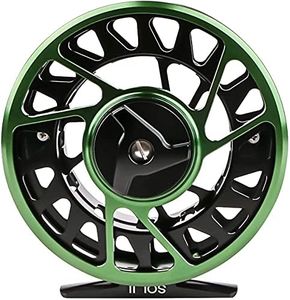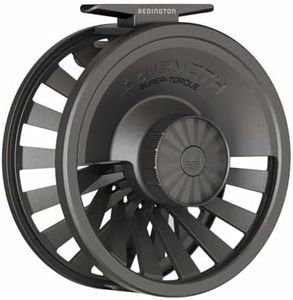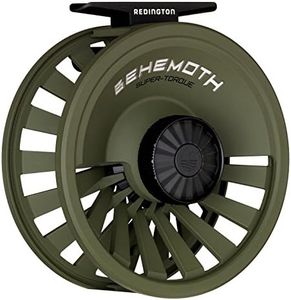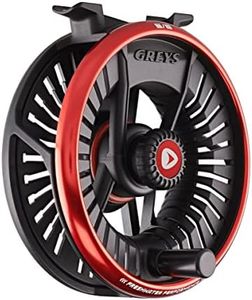We Use CookiesWe use cookies to enhance the security, performance,
functionality and for analytical and promotional activities. By continuing to browse this site you
are agreeing to our privacy policy
10 Best Fly Fishing Reels
From leading brands and best sellers available on the web.Buying Guide for the Best Fly Fishing Reels
When it comes to choosing a fly-fishing reel, it’s important to match your equipment with your fishing style and environment. The right reel can make casting smoother, help you land that big catch, and ensure an enjoyable and trouble-free day on the water. Consider the type of fish you’re aiming for, the conditions you’ll encounter, and your own comfort with fly-fishing. Understanding the main features of fly-fishing reels will help you make a smart and satisfying choice.Size/WeightThe size or weight of a fly-fishing reel usually matches the size of the rod and the weight of the line you’ll use. Reel sizes are often labeled in numbers like 3/4, 5/6, or 7/8, which correspond to the line weight. Lighter reels are best for small fish and delicate casts, often used in freshwater streams with smaller rods and lighter lines, while heavier reels suit bigger fish and stronger rods, such as when fishing in saltwater or catching larger species. To pick the right size, consider the type of fish you target most and the water you fish—choose light for small trout, moderate for versatile fishing, and heavy for large game fish.
Drag SystemA drag system controls how much resistance a fish feels when it pulls on your line. The main types are click-and-pawl (basic and traditional) and disc drag (more advanced and smoother). Click-and-pawl drags are simple and ideal for small fish or anglers who appreciate classic simplicity, but they provide less stopping power. Disc drags offer more precise control and can help stop strong, fast fish without breaking your line. For beginners or those targeting smaller fish, click-and-pawl may be enough, while anglers pursuing larger, faster fish—especially in saltwater—benefit from the smooth, adjustable power of a disc drag.
Arbor SizeArbor refers to the diameter of the reel’s spool. Traditional arbor reels are narrower and hold less line, mid-arbor reels are a middle ground, and large arbor reels have wider spools that collect line faster and reduce line memory (the tendency of line to stay coiled). Small or medium arbors are suitable if you’re fishing for smaller species with less need for rapid line retrieval, while large arbors are better for big fish that take long runs, since they let you pick up line quickly and keep it less tangled. Think about whether you need to retrieve line fast or store a lot of backing when choosing your arbor size.
Material and ConstructionFly-fishing reels are made from various materials, mainly cast aluminum, machined aluminum, and composite plastics. Cast aluminum and plastic reels are lighter and usually more affordable, but may not be as durable. Machined aluminum reels are made from a solid block of metal, making them strong, corrosion-resistant, and often suited for demanding fishing environments like saltwater. For casual fishing in freshwater, lighter materials may be just fine, but if you want a longer-lasting reel or plan to fish in saltwater or challenging conditions, a machined aluminum reel offers strength and resistance to the elements.
Line CapacityLine capacity tells you how much fly line and backing the reel can hold. Backing is extra line stored beneath the fly line, useful when a fish makes a long run. Reels with greater line capacity are essential when targeting large or fast-swimming fish. If you fish rivers or creeks for small trout, you don’t need a reel with large capacity; if you’re going after species that run far like salmon or saltwater fish, choose a reel with ample room for both line and backing.

